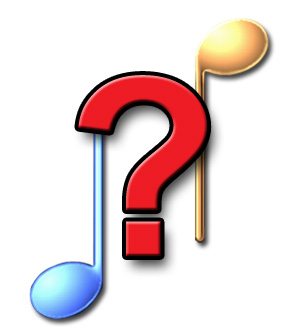You may have wondered why intervals are such a hot topic in ear training. Intervals are often where musicians first encounter the idea of ear training and doing focused exercises to improve their musical listening skills. But why do interval ear training anyway?
But on the surface of it, intervals seem like a dull, abstract music theory concept.
It can be hard to see exactly why you should bother with interval ear training.
In this article we’ll explore some of the reasons and show you what the point of ear training on intervals really is.
If you’re looking for more of the “how to”, check out our full guide to learning intervals.
Before we dive into, make sure we’re clear on the fundamental question:
What are intervals?
(do you already know all about intervals? Skip ahead to the why…)
the distance in pitch
between two notes.
Take any two notes.
Each one has a pitch (how high or low it is), and if the two notes aren’t the same, there will be a distance from the pitch of one to the pitch of the other.
We measure that distance (normally in “semitones” a.k.a. “half-steps”), and assign names to the different distances.
For example, rather than talking about notes being 7 semitones apart—like middle C and the G above it—we call that interval a “perfect fifth”.
Or when comparing one D note to the D below it, we could say they are “12 semitones apart”… Or that the interval between them is an “octave”, as in “The second D is an octave below the first D.”
Some other interval types you might have heard of:
minor second, major second, minor third, major third, perfect fourth, tri-tone (or augmented fourth or diminished fifth), perfect fifth, minor sixth, major sixth, minor seventh, major seventh, and the octave.
Don’t worry about all these names for now! Just understand that they’re simply words we use to refer to particular distances in pitch. You can learn to spell intervals later.
Now that we’re all clear on what an interval is, let’s move on to the burning question of why interval ear training is important…
What’s so great about intervals anyway?
Intervals are interesting and useful in themselves (and we’ll discuss that in a minute) but first off, there’s a big reason intervals are important throughout music:
“Relative pitch” is your sense of how high or low a note is compared to another note.
This is the sense of pitch we rely on most often to understand, create, and even just appreciate music.
So relative pitch is a vital listening skill—and intervals are the building blocks of relative pitch!
Why do interval ear training?
Knowing what intervals are and how they are important for improving your sense of relative pitch, you might still be left wondering how exactly ear training intervals will help you in music.
The first and most obvious reason is that interval ear training lets you identify intervals in music.
When you hear a pair of notes, you’ll be able to recognise the interval (e.g. it’s a perfect fourth) and so know how far apart they are in semitones (e.g. 5 semitones apart).
Why is that useful?
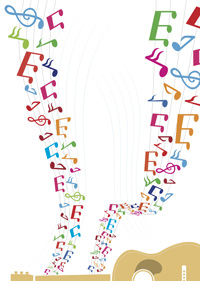 Well, if you were picking out a melody on your instrument, you might know in your head how the melody goes (we call that audiation) but to connect it with your instrument you need to know something more specific: which notes to play. By hearing the notes in your head and recognising the intervals between them, you’ll know how far to move from one note to the next, and so be able to play the melody on your instrument.
Well, if you were picking out a melody on your instrument, you might know in your head how the melody goes (we call that audiation) but to connect it with your instrument you need to know something more specific: which notes to play. By hearing the notes in your head and recognising the intervals between them, you’ll know how far to move from one note to the next, and so be able to play the melody on your instrument.
Or supposing you are a song writer: you might want to write down your music on manuscript paper, enter it into computer software like Sibelius. After doing interval ear training you’ll be able to write down the notes that represent the music you want to create, without being dependent on trial-and-error note-picking on a piano keyboard.
So recognising intervals by ear is helpful in this simple direct way.
But as mentioned above, there is actually a much broader and more powerful way that ear training intervals helps you as a musician: by improving your sense of relative pitch.
Interval ear training is actually a form of relative pitch ear training so it builds up your ability to recognise notes based on the other notes present.
What does that mean?
It means that instead of hearing just a jumble of unknown notes, you’ll be able to recognise the relationships between all the notes. So, for example, if you know what key you’re in, or what one of the chords in a song is, you’ll be able to work out all the other chords—just by ear. If you know what note the tune starts on, you’ll be able to work out all the other notes just using your sense of relative pitch.
It’s vital for improvisation too (with the possible exception of drummers!) because relative pitch lets you connect what you hear in your head with what you’re playing on your instrument, and take your musical improvisations wherever you want them to go.
In summary: Relative pitch is a powerful skill for any musician to have, and interval ear training is a fast way to acquire a strong sense of relative pitch.
Interval Ear Training Benefits
Let’s dive into some specific reasons to spend time on intervals as part of your ear training.
Reason 1: Judge Pitch Distances
By recognising the intervals between notes you can judge how far one note is from another.
At first this is a slightly clunky skill. You have to think through “this note sounds like it’s a perfect fifth above that note, so then if the first one is a C, the second one must be a …. G” and so on.
This can be useful for melodic dictation: you can actually treat it as interval dictation, one interval after another!
This process works, but it’s actually only the beginning stage.
As you get faster at recognising intervals, this whole process becomes fast and ingrained, to the point where you don’t need to consciously think through the process. You’ve built the mental framework required and the notes you hear simply slot into place in your mind as you hear them.
Or to put it another way: you have internalised a “mental ruler” for judging pitch distances.
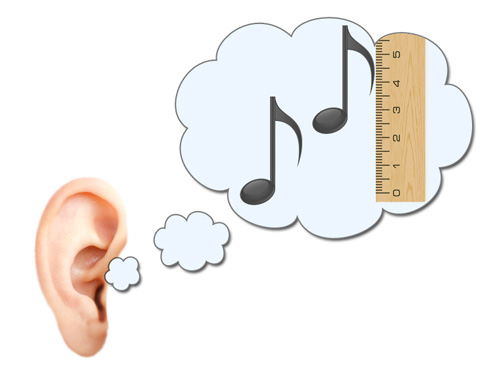
This means you don’t need to explicitly identify each interval – you just have an instinctive feel for how far apart the notes are, and can automatically hear that, for example, the second note is a G if the first is a C.
This is where you really begin to feel like a relative pitch master!
Reason 2: Clearer Hearing
Being able to judge pitch distances like this has a really exciting knock-on effect: you will hear melodies and harmonies more clearly.
Because you are more acutely aware of the gaps between notes, your brain begins to hear groups of notes with much greater sensitivity. What you would have heard before as a jumbled blur of notes together, you now start to hear as individual notes.
You can still appreciate the overall whole sound (like any person in the street would hear it) but you can also pick apart the notes by ear and hear the rich musical detail.
As well as hearing more clearly, this also helps you understand what you’re hearing. For example, you won’t just hear a “nice smooth chord”, you’ll hear that it’s a major third and a perfect fifth, so a major triad chord. This kind of musical intelligence is an important step towards transcribing music or playing by ear!
This increased clarity of hearing applies to melodies (tunes, intervals, scales) and harmonies (chords, chord progressions) and will benefit you literally every time you listen to or play music.
Reason 3: Fearless Sight-Singing
Many musicians come to ear training through singing, and interval ear training is a important topic for singers.
Why? Because sight-singing is hard!
It’s all very well when a melody gently meanders up and down the staff. We can work out how the tune goes easily enough.
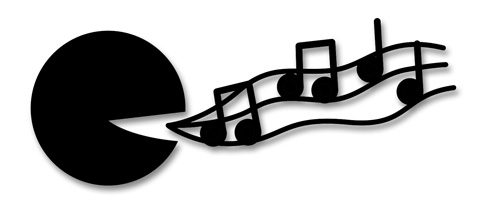
– But when there’s suddenly a big leap in your melody…
– Or you have to pitch your starting note from one of the other voice parts…
… It’s much harder to know what note to sing!
This is where doing some interval ear training really helps. You can use your ear’s knowledge of intervals to turn the written music into a melody in your head. You look at the notes on the staff, work out the intervals present, and use your interval recognition skills to figure out how far your voice’s pitch should move from one note to the next.
After a bit of ear training focused on intervals, sight-singing isn’t so scary after all!
Reason 4: Bring the theory to life
One of the places musicians first encounter intervals is in their music theory books. Learning to “spell” the different intervals. It’s a bit of a chore. A major third above a C is an E. A perfect fifth above a G# is a D#… And so on.
Sadly, many musicians leave intervals there—and never actually connect them to their musical meaning: the sounds of the intervals.
If you do this though, it brings the theory to life!
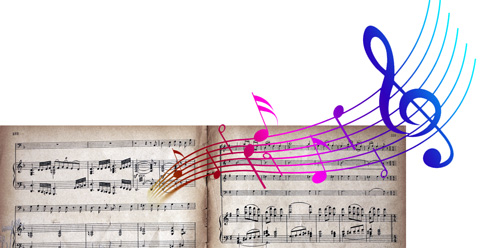
You’ll realise that what matters about a “minor third” isn’t the nitty-gritty of handling sharps and flats when writing it down—it’s the characteristic sound that every minor third has, and how knowing that sound can help you hear and play minor thirds in music. This goes for every interval, and gives them a meaning and significance far beyond what the dry theory books would have you believe.
It seems obvious when you put it like that… But many musicians never make this discovery, and completely miss out on the benefits of interval ear training.
Traditional music theory teaching has a lot to answer for!
Reason 5: Create music more freely and confidently
The combination of these interval ear training benefits has a powerful impact on who you are as a musician.
In short: having strong interval recognition skills gives you a freedom and confidence that you may well otherwise lack.
- By bringing the theory to life with relative pitch, intervals let you understand theory in a meaningful way and actually use it in your musical life.
- By giving you a clear mental sense of how each interval should sound, interval ear training improves your sight-singing. You’ll be able to reliably and accurately sing the right notes just from looking at the score. Your improved relative pitch will let you hear that you’re correctly singing in tune. These two together will rapidly build your sight-singing confidence.
- By providing you with known building blocks for melody and harmony, intervals let you compose and improvise music far more easily. The notes you use are no longer chosen purely theoretically or by tedious trial-and-error. Instead, because you understand the relationships between the notes, you can jump straight to the ones you need and create the music want to.
- These “building blocks” work in reverse too: when you hear music (recorded or other musicians playing live), knowing those interval building blocks lets you decipher what’s being played, recognising the notes by the relationships between them. Instead of just appreciating the musical whole, you can appreciate many different aspects of how the notes are working together to create that music.
Summary: Why Do Interval Ear Training
We’ve discussed what intervals are and how they’re intimately tied to your fundamental musical sense of relative pitch.
You now know why intervals are so much more than just an abstract music theory concept.
And you’ve learned 5 compelling reasons that interval ear training should be a core part of your musical education.
Hopefully all of this has you absolutely convinced to start interval ear training as soon as possible… So there’s just one question remaining: How can I start learning intervals?

